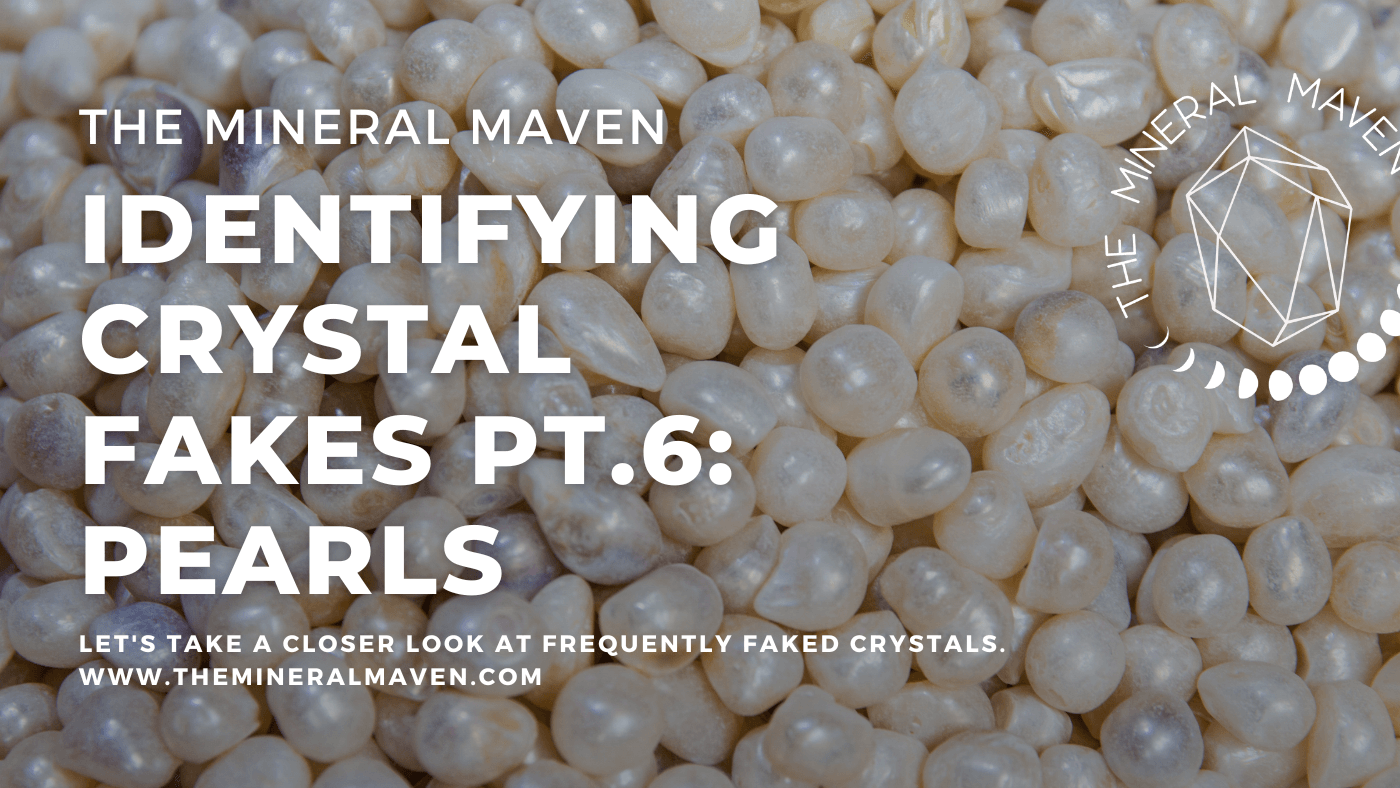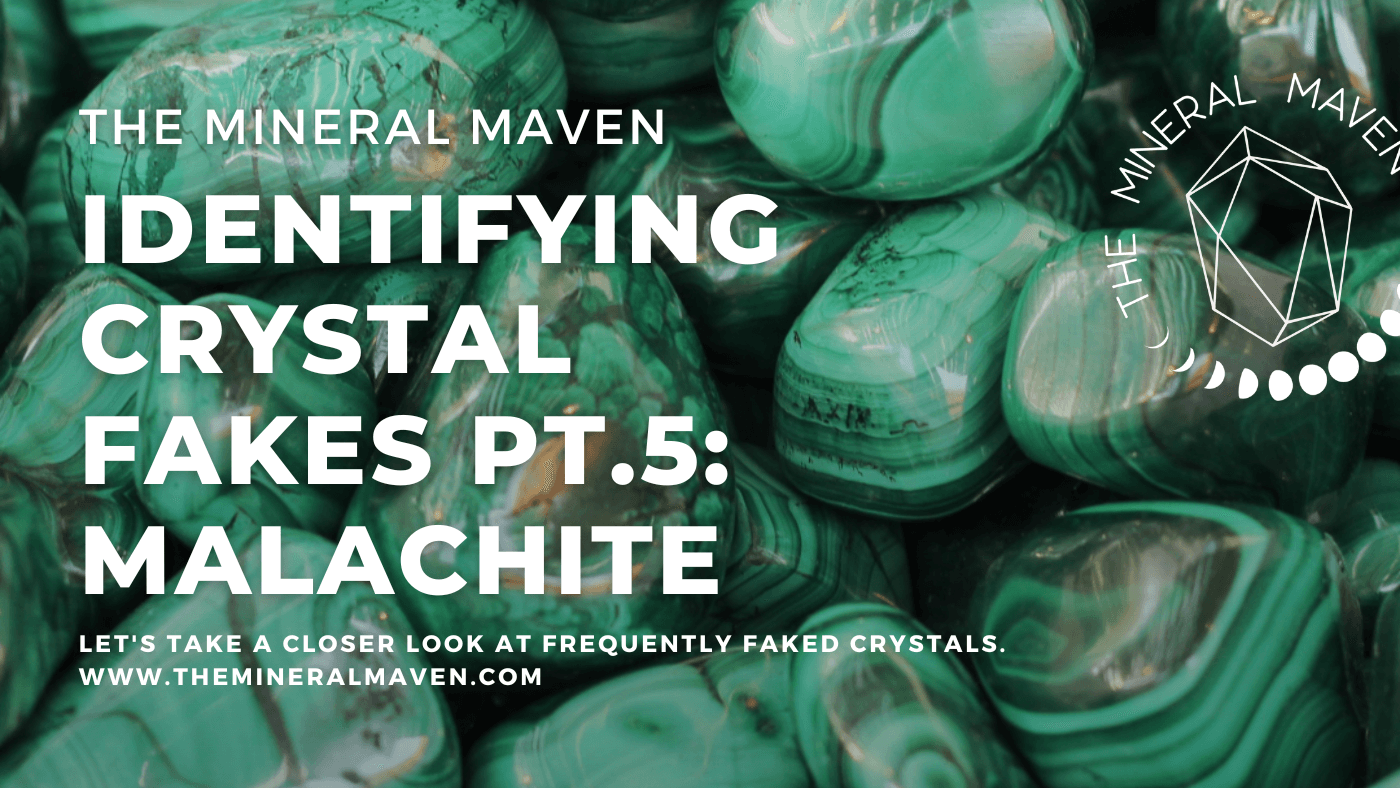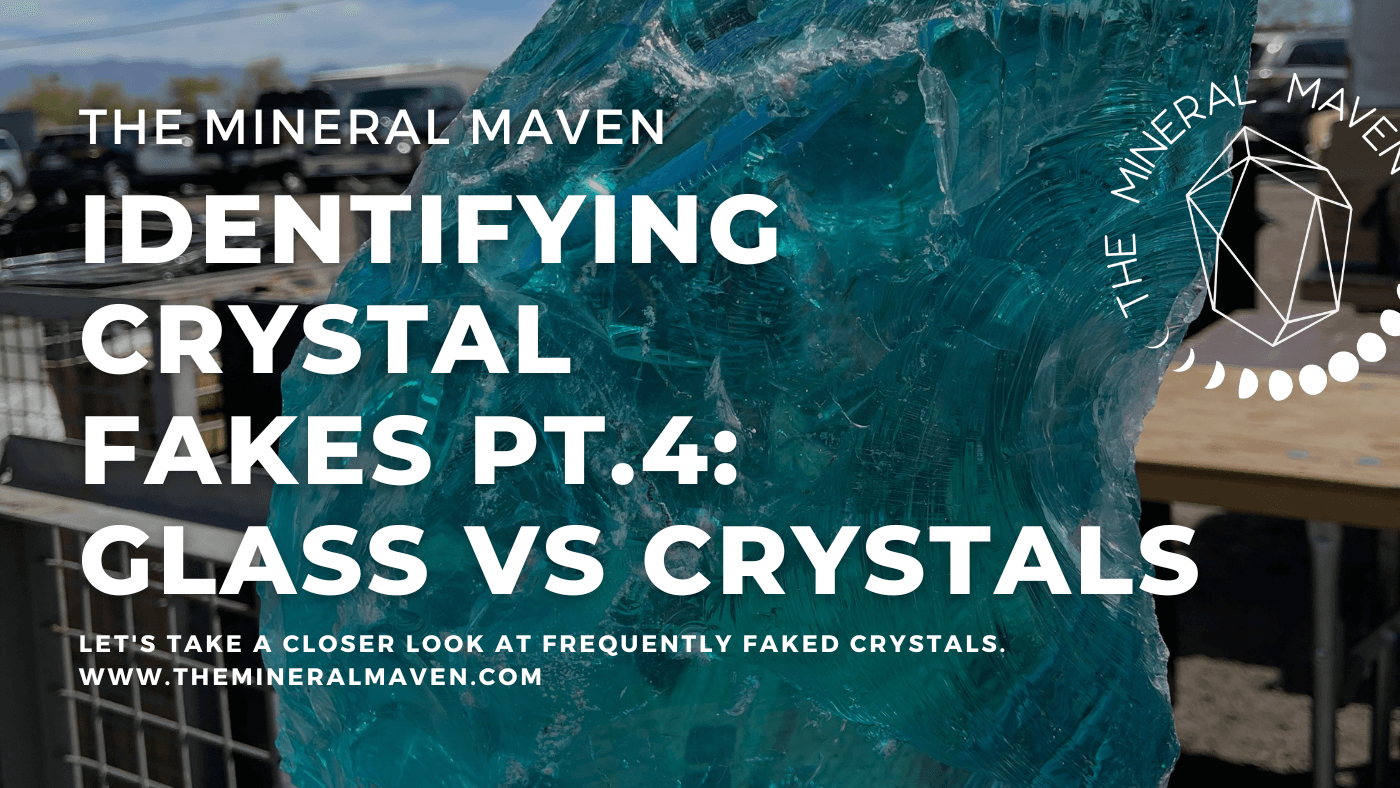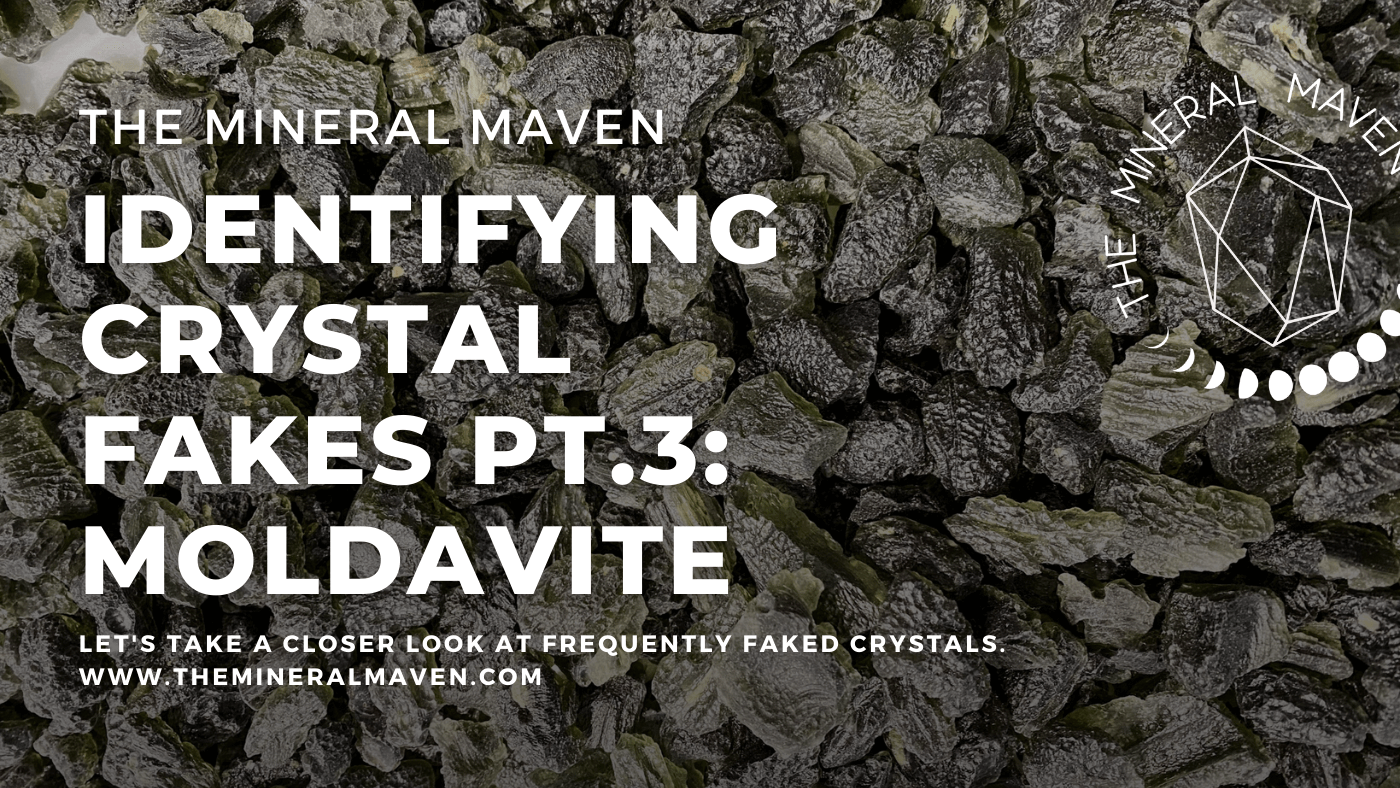The Mineral Maven just celebrated our 5 year business anniversary on June 20th. To celebrate, I crafted a collection of one-of-a-kind genuine pearl and high quality gemstone bracelets. Pearls inspired the entire collection because they're June's birthstone and a Cancer Season correspondence. This was my first time carrying pearls in the shop, or working with pearls for my bracelets, so this inspired me to do a deep dive into pearls and differentiating between the real deal and fake pearls.
This article will explain more about pearls and their formation, cultured pearls vs. natural pearls, and how to spot synthetics. As always, feel free to leave comments or send me an email with any follow up questions.
Genuine cultured freshwater pearl beads. You can see the variation among them, no two are exactly alike.
About Pearls
Pearls are an organic mineral mixture of calcium carbonate: either aragonite or a mix of aragonite and calcite, with a hardness of 2.5-4.5 on the Mohs scale. Their organic formation precludes them from being technically considered a true mineral.
They form when an irritant (like a grain of sand) becomes lodged between the mantle lobe and the shell of a bivalve. There are a host of organisms in the bivalve family that can create pearls: clams, mussels, oysters, etc. In natural pearls, this occurs spontaneously and humans happen upon them like a little surprise. In cultured pearls, a tiny rounded bead made of clam shell is inserted into the right spot between the mantle and shell of a bivalve, and the creature forms a calcium carbonate pearl around it by depositing layers of nacre. Nacre is the stunning iridescent material (also known as mother of pearl) that composes pearls, layer by layer.
Locality
Pearls form in both freshwater and saltwater environments in many areas of the world (including the United States). Historically, those used in jewelry were often found in the Persian Gulf. More recently recovered natural pearls are now typically found off the coast of Bahrain, Australia, and Polynesia. Saltwater cultured pearls are primarily from Japan and China, with some from Australia and the Philippines. China is the primary source of freshwater cultured pearls.
History
Some of the earliest pearls we've discovered are from the Triassic Period (in Hungary) and Cretaceous Period (in California).
Pearls have been prized by humans as wealth and status symbols for thousands of years, and were especially popular during Roman times. Natural pearls were coveted by royal families and wealthy citizens in Asia, Europe, and beyond. In ancient times, prior to the colonization of what is now known as the Americas, natural pearls were found in the Persian Gulf, present-day Sri Lanka, Chinese rivers, and rivers in Europe. Christopher Columbus traced pearls that he "discovered" in the New World back to pearl sources in present-day Venezuela and Panama, which only fueled demand in Europe. These sources have since been depleted due to overfishing, oil drilling, and pearl culturing.
"The first steps toward pearl culturing occurred hundreds of years ago in China, and Japanese pioneers successfully produced whole cultured pearls around the beginning of the twentieth century. These became commercially important in the 1920s (about the same time natural pearl production began to decline). From the 1930s through the 1980s, pearl culturing diversified and spread to various countries around the world." (Gia.edu)
Genuine cultured freshwater pearl and high quality gemstone bracelets that I made for the shop.
Cultured Pearls
When you're in the market for pearls, it's important to understand what the term "cultured pearls" refers to.
First, cultured pearls are still real, genuine pearls (no fake pearls here!) - they are calcium carbonate nacre formed by bivalve critters. However, they are grown with some human assistance in pearl farms around the world. Cultured pearls are formation is discussed in the first section of this article.
Natural (spontaneously formed in the wild) pearls are extremely rare ($$$$). You will most often find natural pearls in museums (hello the literal Crown Jewels of England) or with high end collectors. They can be priced 100x higher than their cultured pearl counterparts (even if they are the same size and quality/luster). For these reasons, natural pearls are simply not commercially viable on a real scale.
Nearly all pearl jewelry found on today's market is cultured pearls (either freshwater or saltwater), so it doesn't require disclosure from the seller. The difference between cultured and natural is simply human intervention.
How to Tell the Difference
Unfortunately, x-ray is the only definitive method of determining natural vs cultured pearls, because natural pearls will not contain the implanted bead/tiny shell that triggers the nacre to form during culturing. It's safest to assume that all pearls you're purchasing are genuine cultured pearls or imitation (fake pearls) as opposed to natural, since natural is so rare and expensive.
Imitation pearl (these fake pearls are likely plastic) costume jewelry that I found at my grandma's house. Not all imitations will be yellowed to this extent, these are very old. You can see how they're each perfectly identical in size/shape/appearance.
Imitation Pearls
Materials
Imitation pearls are most often plastic or glass, with coatings of paints or other materials that mimic the natural luster of genuine pearls. Sometimes mollusk shells are used to create fake pearls - called "shell pearls" when they are properly labelled.
How to Identify Them
Fake pearls are often uniform in size, shape and appearance, they look quite perfect! Whereas genuine pearls are each unique and will always have imperfections, ridging, slight pitting, grooves, etches, etc.
Real pearls will also have a color variation between them, even if they're on the same string or necklace/bracelet, because every single pearl is unique and one-of-a-kind.
Fake pearls made with plastic are also more lightweight than genuine pearls. Real pearls have some heft to them.
Another tell is the fact that real pearls will have very small holes drilled into them for beading, whereas fake pearls can have larger holes without damaging the delicate calcium carbonate.
Imitation Pearl Tests
I think the validity of most pearls is relatively easy to ascertain by the way they look, by examining them closely. But if that fails, here a few tests you can try.
Tooth Test
You can run a pearl along the biting surface of your tooth to check if it's real or not: a genuine pearl will feel gritty and slightly rough, while fake pearls will be smooth. If you'd rather not put the pearl in your mouth because you're in the middle of a jewelry store, etc (please don't put random pearls in your mouth) you can also rub the pearls against each other. Natural pearls will feel gritty against each other, and maybe even have a tiny amount of fine dust form. Fake pearls will be smooth and glide.
Vinegar Test
PLEASE NOTE: This will damage real pearls, and is recommended as a last resort).
All you need to do is drop some vinegar on the pearl (or submerge it). A real pearl will dissolve (the speed of dissolution depends on whether the vinegar is watered down), because the acid of the vinegar will react with the calcium carbonate of the pearl. An imitation pearl will be fine.
I hope that this blog provides a good starting point for identifying fake pearls in the market, so you can better vet pearl jewelry and we can start normalizing more transparency around retailers disclosing synthetic/imitation pearls when they're used. Of course, it isn't comprehensive and they are getting better at manufacturing more convincing fakes, but this can help you weed out the tell-tale synthetics. As always, the best route is to buy from a retailer you trust.
I'll add that there's nothing wrong with purchasing or enjoying synthetic pearls, but my issue with all crystal fakes is the lack of transparency for both suppliers and retailers. I believe if someone wants to sell heavily treated, synthetics or imitation stones they should absolutely be disclosing that to their customers at the point of purchase.
Please feel free to comment with any additional questions below and subscribe to my newsletter so you don't miss the next blog installation of Crystal Fakes.
References: 'Pearl' article on Mindat.org
'Traditional Birthstones - Pearl' article on University of Nebraska's School of Natural Resources.
'Pearl History and Lore' article on GIA.edu
'How to Tell if Pearls are Real or Fake: Five Simple Tests' article on PearlsofJoy.com
PEARL + AQUAMARINE 8mm - HANDMADE CRYSTAL BRACELET
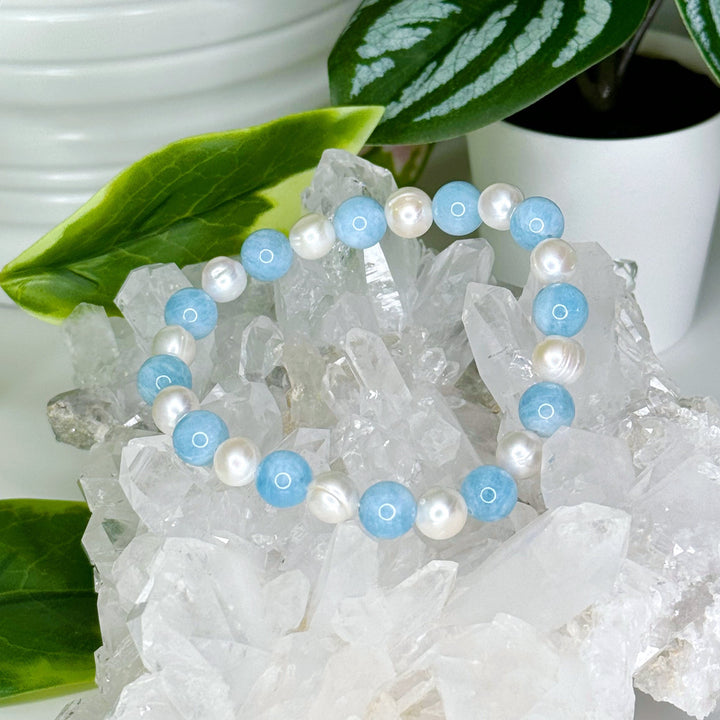
$38.00
This listing is for (1) freshwater pearl + 8mm aquamarine handmade crystal bracelet. This bracelet is one-of-a-kind and you will receive the exact bracelet shown. Elastic with approximately 7" length, ~6.5" inner circumference. Sizing can be adjusted, simply specify the… read more

